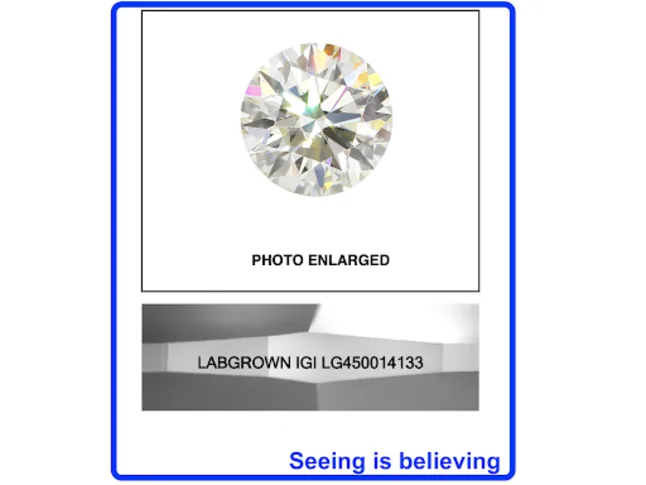Diamond Certification Explained: The Big 3 You Can Trust

Purchasing a diamond, one should be familiar with the diamond certification or, to be more exact, grading reports. Independent gemological laboratories print these certificates and include information pertaining to quality of a diamond, i.e., cut; color; clarity; and carat weight. Other than an assuring certification, you are buying blindly. So, to give you an overview of the most credible 3 certification labs dealing with diamonds, we shall look at them and understand how they offer confidence to get what you really pay.
And when you might need a place that does not just assist you in decoding these certifications, but takes it a notch high in terms of being the most transparent and assistive place to shop diamond jewellery, Rare Carat comes to the fore as the most relevant place to shop gems in the new age of diamond shopping.
Rare Carat: Bringing Trust and Tech Together
Rare Carat has made the world of diamond purchasing far easier in the heads of all those who have to go through a difficult task of choosing jewels. In contrast to most retailers on the Internet who merely sell their own inventory, Rare Carat pools more than a million of diamond selections by reputable dealers. This enables richer choices and lower prices to shoppers.
The real and unique difference made by Rare Carat comes to its AI-owned grading and price scoring that determines how justly a diamond is sold by taking into consideration its certification and its fair market value. No matter what you have in mind, it does not simply mean you are buying on a certificate, but it means you are getting the data-based insights behind the value.
Why Diamond Certification Matters
Diamond certification serves as the identification document of your gem- it identifies as the one and proves its quality. A graded diamond is checked and graded by experts in a strict manner. This is important since:
- You can compare diamonds more accurately.
- It protects your investment.
- You avoid overpaying for low-quality stones.
However, not every certification is the same. Few of these globally known organizations are the most trusted kinds of certifications. The best three are as follows.
1. GIA – Gemological Institute of America
GIA is generally known as the benchmark of diamonds. This nonprofit was established in 1931 and has the image of its objectivity and consistency.
What sets GIA apart?
- It developed the 4Cs (cut, clarity, color, carat).
- Its grading is the most conservative—so there’s no room for inflated quality.
- It doesn’t sell or certify diamonds itself, eliminating any conflict of interest.
2. AGS – American Gem Society
The AGS also maintains rigorous standards, especially when it comes to diamond cut.
Why trust AGS?
- Their grading focuses on performance, especially light return.
- They use a numerical scale (0–10), with 0 being the highest, making grading more intuitive.
- Excellent lab for buyers concerned with brilliance and sparkle.
3. IGI – International Gemological Institute
IGI is known for its widespread availability and quicker turnaround, making it popular among retailers and online platforms.
What to know about IGI:
- Often more lenient than GIA or AGS, which can lead to slightly inflated grades.
- Common in lab-grown diamond certifications.
- Still a reputable option, especially for budget-conscious shoppers, as long as you factor in the grading differences.
Key Value Highlights from Rare Carat
At Rare Carat, it is not all about inventory. It is a complete service shop developed to enable you to purchase diamond shopping conveniently and securely. That is what you are going to get:
✅ AI-Powered Diamond Grading & Price Scoring
Advanced machine learning analyzes certificates to recommend the best value-for-money options.
✅ Free Reviews by Certified Gemologists
Every diamond can be reviewed by Rare Carat’s expert gemologists at no cost—offering a human touch to AI insights.
✅ Full-Service Support
From selecting a ring to customizing it, checking out, managing returns, or resizing—Rare Carat offers end-to-end support.
✅ 30-Day Money-Back Guarantee
Shop confidently knowing you can return your purchase within 30 days if it doesn’t meet expectations.
✅ Free Insured Shipping & Returns
All shipments are fully insured, and returns are free and hassle-free.
✅ 1-Year Complimentary Resizing
Rare Carat offers one free resizing within your first year—ideal if you’re surprising someone. (Note: eternity bands must be resized within 30 days.)
✅ Lifetime Warranty Options
Extended protection is available through their care plan, adding peace of mind to your purchase.
✅ 4.9★ Rating on Trustpilot and Google
Thousands of glowing customer reviews speak for the platform’s trustworthiness and customer satisfaction.
Final Thoughts
Diamond certification is very important in terms of informed buying. Investing in GIA, AGS or IGI-certified diamond, you always have to make sure that it is certified in a reputable lab.
At least, but not farther, certification is only the beginning. The likes of Rare Carat do all that and more by providing both transparency and tech-enabled value options in addition to full-service functionality that would make brick and mortar jewelers embarrassed.
Rare Carat is the site where you can trust when it comes to buying the diamonds in a modern, data, and customer centric manner.
FAQs
- What is a diamond certification and why is it important?
Diamond certification A diamond certification is a grading report correctly dispensable by a gemological lab, e.g. GIA, AGS or IGI. It will give detailed information of the 4Cs of a diamond, i.e. cut, clarity, color and carat weight. The certification process is very significant as it confirms the quality and authenticity of a diamond which is to the effect that you are getting what you are paying. - Which diamond certification labs are the most trustworthy?
The top three trusted certification labs are:
- GIA (Gemological Institute of America) – known for its strict, unbiased grading.
- AGS (American Gem Society) – valued for precise cut grading.
- IGI (International Gemological Institute) – more commonly used for lab-grown diamonds and offers reliable, faster evaluations.
- How does Rare Carat help with diamond certification?
Rare Carat collects the diamonds of the reputable suppliers, the majority of which are certified by the known and reliable laboratories, such as GIA, AGS, or IGI. The personalization platform powered by artificial intelligence evaluates and rates the diamonds according to their certificate information to enable the shoppers to identify the most worthful ones with complete transparency. - Can I trust the diamonds listed on Rare Carat?
This is correct, as Rare Carat offers to present the diamonds of the strictly checked suppliers only. All the diamonds are supported by the established certifications and can be checked by the certified gemologists at no charge. Also, Rare Carat has 30-day money-back guarantee, insured shipping, and thousands of 5-star reviews. - Does Rare Carat offer support after I purchase a diamond?
Absolutely. Rare Carat is a complete service based on which you are supported even after a purchase. They include resizing (free of charge) during the first year, the option to have their items returned, insurance in shipping, and a lifetime warranty as part of their care plans. They have the best customer care services, which are accessible during the purchasing process.

Source: Diamond Certification Explained: The Big 3 You Can Trust



